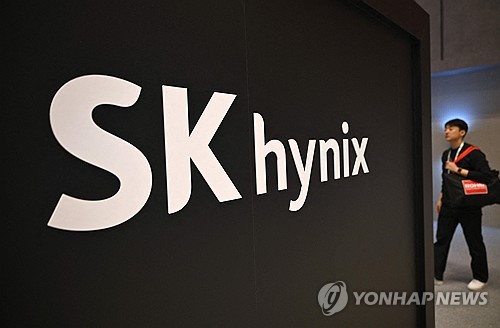(Seoul=Yonhap Infomax) Hak Seong Kim – As SK hynix Inc., South Korea’s second-largest chipmaker, enters what analysts are calling the “biggest memory boom in 30 years,” the company continues to post record-breaking quarterly results, fueling growing market speculation over the scale of its future shareholder returns.
SK hynix has announced that, in addition to a fixed dividend, it will allocate 50% of its free cash flow (FCF) generated from 2025 to 2027 for additional shareholder returns. Some securities firms project that FCF during this period could exceed 100 trillion won ($76.2 billion), suggesting that, in theory, tens of trillions of won could be returned to shareholders. However, given the company’s substantial investment needs, analysts caution that the actual payout may fall short of this theoretical maximum.

According to the financial investment industry on the 21st, several brokerages recently estimated SK hynix’s FCF for 2025–2027 at around 110 trillion won ($83.8 billion). Kiwoom Securities forecast in a report on the 19th that SK hynix’s FCF would surge to 20 trillion won ($15.2 billion) this year, 33 trillion won ($25.2 billion) next year, and 63 trillion won ($48.0 billion) in 2027, totaling 116 trillion won ($88.4 billion) over three years. NH Investment & Securities (110 trillion won) and BNK Investment & Securities (113 trillion won) released similar projections this month.
Forecasts varied depending on assumptions about the artificial intelligence (AI) market. Kyobo Securities projected up to 146 trillion won ($111.2 billion), while Heungkuk Securities offered a more conservative estimate of 87 trillion won ($66.3 billion).
FCF is calculated by subtracting capital expenditures (CAPEX) from cash flow from operations. It represents cash that a company can freely use for mergers and acquisitions (M&A), shareholder returns, or debt repayment.
Market participants are closely watching FCF because SK hynix’s three-year shareholder return policy, announced last November, is based on this metric.
Under the policy, SK hynix will pay a fixed dividend of 1,500 won per share during the period. If the company achieves its financial soundness targets (net cash position and adequate cash reserves), it will execute additional shareholder returns after 2028, up to 50% of cumulative FCF over the three years. The company also indicated it may consider early returns if meaningful FCF is generated.

SK hynix has built a solid foundation for shareholder returns. In the third quarter of this year, the company shifted to a net cash position, with cash and cash equivalents exceeding borrowings. In response, domestic and global credit rating agencies have upgraded their outlooks on the company to “positive.”
Under its shareholder return policy, SK hynix’s annual fixed dividend payout for 2025–2027 is expected to be about 1 trillion won ($762 million). The company paid a similar annual average dividend from 2022 to 2024. The last share buyback was in 2018.
If SK hynix’s FCF reaches 100 trillion won ($76.2 billion) for 2025–2027 as projected, up to 50 trillion won ($38.1 billion) could theoretically be allocated for shareholder returns—a dramatic increase compared to recent years.
However, most analysts believe it is unlikely that SK hynix will return the maximum amount to shareholders. SK Group Chairman Chey Tae-won has repeatedly emphasized the need for massive investments to meet surging AI demand.
Moreover, since the policy specifies “within 50% of FCF,” the company would not be breaking its promise even if actual returns fall short of the cap.
Another key factor is SK hynix’s current profitability, which far exceeds its cost of equity (COE, or required return for shareholders). According to KB Securities, SK hynix’s average return on equity (ROE) over the next three years is projected at 39.1%, more than triple the estimated COE of 12.4%. Financial theory suggests that when ROE exceeds COE, reinvestment is more beneficial for shareholders.
The company has taken a cautious stance. On the Q3 earnings call on October 29, Kim Woo-hyun, Chief Financial Officer of SK hynix, said, “Given the significant growth potential of the AI memory market and our high investment returns, we believe reinvesting generated resources into the business is the best use of cash for shareholders.”
He added, “As this is the first year of our new shareholder return policy, we are not currently considering additional shareholder returns, but we will continue to review ways to maximize shareholder value.”
hskim@yna.co.kr
(End)
Copyright © Yonhap Infomax Unauthorized reproduction and redistribution prohibited.

